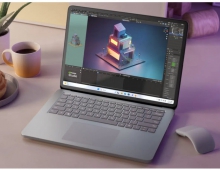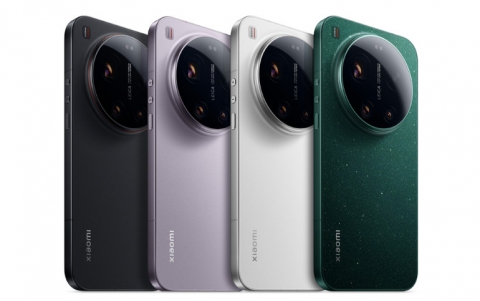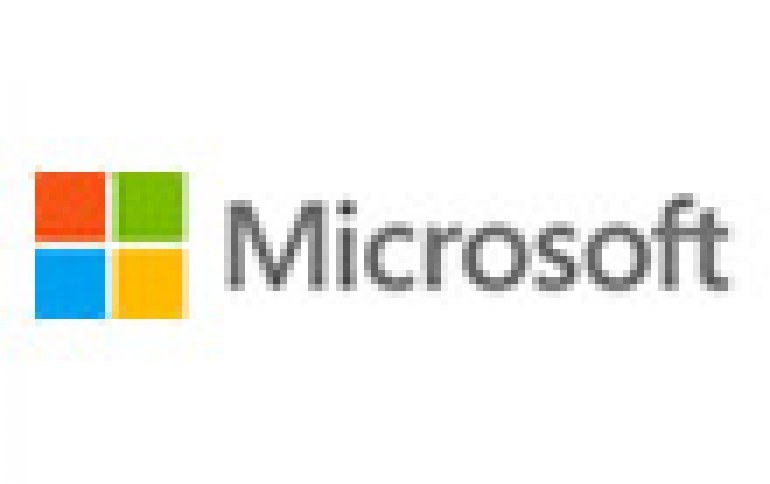
Microsoft Proposes New Power Backup Specification
Today at the Open Compute Project (OCP) U.S. Summit, Microsoft announced the contribution of a distributed Uninterrupted Power Supply (UPS) technology, called Local Energy Storage (LES). The company has made this hardware innovation available to the OCP community so that its benefits can be realized by a broader set of IT customers.
LES offers an integrated power supply and battery combination which is compatible with the Open CloudServer (OCS) v2 chassis system. The new LES units are mechanically interchangeable with the previous PSUs (common slot compliant) that were announced at the time of OCS v2 launch at the OCP EU Summit in Paris last year. The IT administrator can now choose which PSU to use for a specific type of deployment, depending on existing datacenter topology and battery backup requirements.
In a traditional datacenter environment, the UPS system is housed in large separate rooms and typically consists of a large array of flooded lead-acid batteries stringed together to provide the interim backup power for the IT load in case of utility power outages (until the generators are turned on). But this type of traditional UPS design leads to several inefficiencies for the datacenter deployment -- large room footprint for the UPS and battery equipment; AC/AC or AC/DC conversions lead to inefficiency in the power backup system; and the requirement of complicated solutions for ensuring high availability power backup.
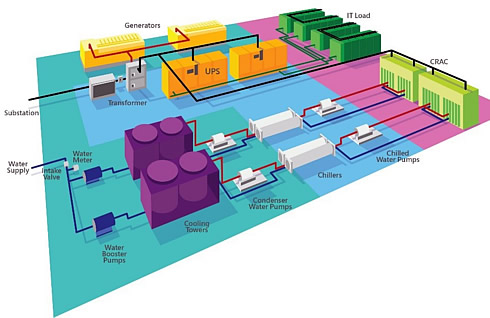
Microsoft moved to an Adiabatic based design which provided significant cost savings for the datacenter build and simplified the operational aspects. The graphic below shows the modified datacenter with the Adiabatic system, but still having the dual-redundant UPS design.
In order to address the various challenges highlighted above with the traditional UPS topology, Microsoft's engineers completely eliminated the facility UPS and moved that capability directly into the IT load. Those helped achieve cost reductions and operational simplicity, and could also open up a whole new area of architectural innovation by tighter integration of the battery system with the IT management and controls system.
Key technologies in LES
Every server using a modern switch mode power supply unit (PSU) comes with active power factor correction, capacitive bulk storage, and an isolated DC/DC output stage. The DC/DC output stage pulls its energy from the bulk storage and maintains the proper output voltage tolerances across the blade load profile. The LES topology reuses the PSU design and control loops (ensuring maximum leverage of already proven designs) adding only components such as batteries, battery management controller, low current isolated charger and a low current 380VDC isolated output.

The hand tool and electric vehicle industry has created a market for low cost, high performance, high quality Li-Ion cells. These same cells are used in the LES battery pack, to ensure that the LES solution can leverage industry volume economics and supply chain.
The LES design takes commodity energy storage devices (batteries) and an industry proven PSU power train, fusing these together in a single package to maximize energy delivery efficiency and minimize cost overheads. LES integrates the battery in the 380VDC bulk capacitance section of the PSU.
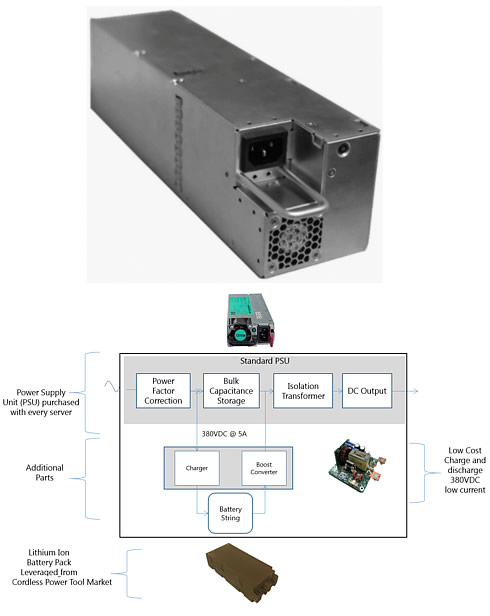
Microsoft says that the advantages of the LES deployment include:
- Up to 5x cost reduction over traditional facility UPS, achieved by simplification of the datacenter power delivery solution and moving the energy storage function to a high volume commodity supply chain.
- Moving the energy storage local to the server eliminates up to 9 percent of the losses associated conventional UPS systems. The LES topology and lithium-ion batteries requires only 2 percent charge overhead versus conventional UPS systems (which require up to 8 percent charge overhead and 1 percent operating overhead). The net result is up to 15 percent improvement in Datacenter PUE
- Given no requirement for a UPS or battery room, the facility footprint can be reduced by 25 percent for Datacenter build capex savings
- Significantly improved serviceability model when compared to flooded lead-acid batteries in traditional UPS solution. LES units are hot swappable and safe upon removal, without any dangers associated with exposure to high voltage or chemicals.
By locally integrating the energy storage devices we have enabled low latency detection and controls not possible in a conventional centralized UPS systems. The LES unit when tightly coupled with the IT management system (OCS chassis manager) can enable new architectural scenarios for utilization efficiency – such as peak shaving, trough charge, processor state control from the row distribution to server.



